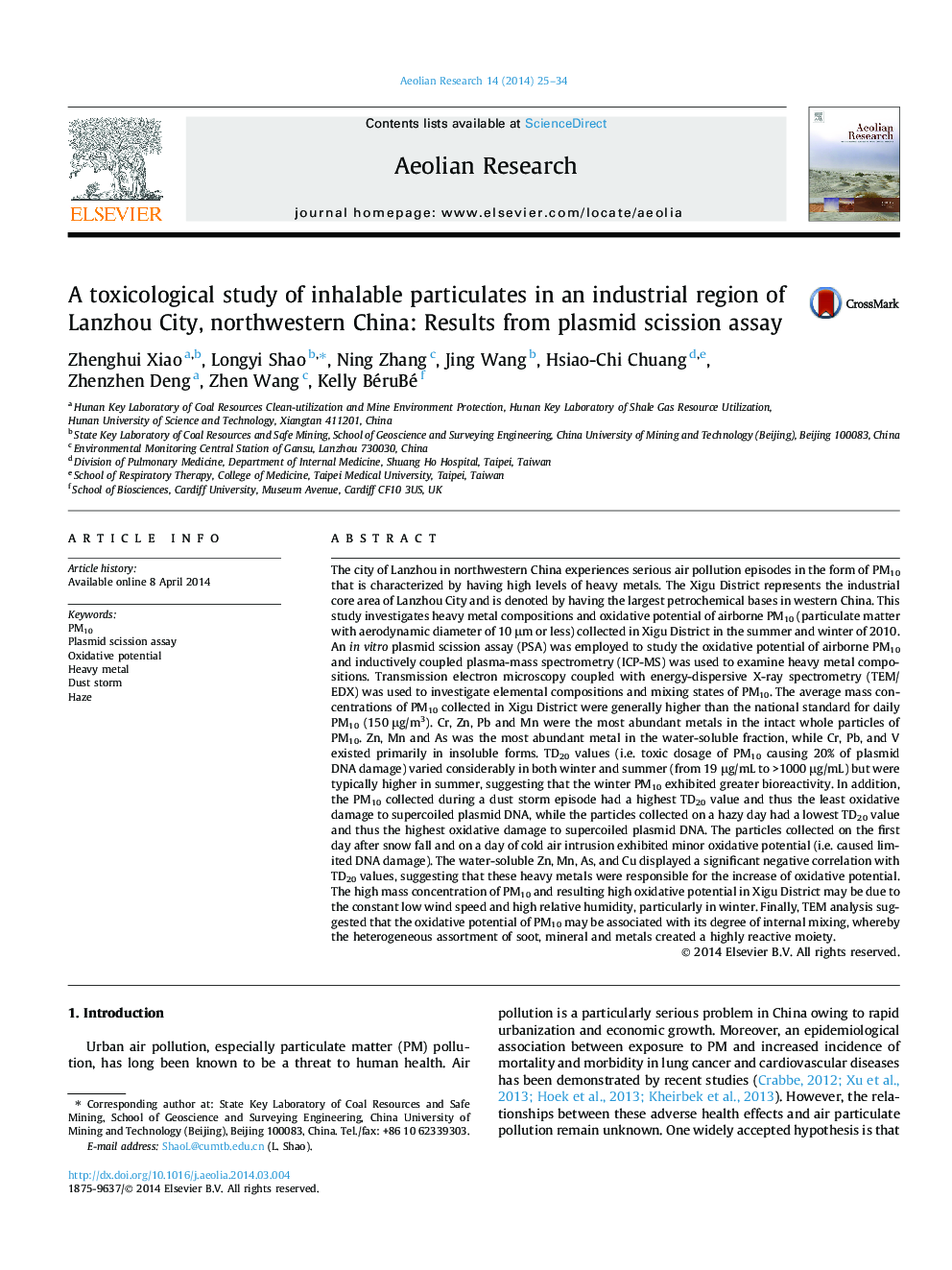| کد مقاله | کد نشریه | سال انتشار | مقاله انگلیسی | نسخه تمام متن |
|---|---|---|---|---|
| 6426419 | 1634113 | 2014 | 10 صفحه PDF | دانلود رایگان |

- Dust storm particles had low level of heavy metals and thus low oxidative potential.
- Haze particles had high level of heavy metals and thus high oxidative potential.
- Low wind speed and high relative humidity facilitated oxidative potentials of PM10.
- Heave metals and oxidative potentials linked to internal mixing of particles.
The city of Lanzhou in northwestern China experiences serious air pollution episodes in the form of PM10 that is characterized by having high levels of heavy metals. The Xigu District represents the industrial core area of Lanzhou City and is denoted by having the largest petrochemical bases in western China. This study investigates heavy metal compositions and oxidative potential of airborne PM10 (particulate matter with aerodynamic diameter of 10 μm or less) collected in Xigu District in the summer and winter of 2010. An in vitro plasmid scission assay (PSA) was employed to study the oxidative potential of airborne PM10 and inductively coupled plasma-mass spectrometry (ICP-MS) was used to examine heavy metal compositions. Transmission electron microscopy coupled with energy-dispersive X-ray spectrometry (TEM/EDX) was used to investigate elemental compositions and mixing states of PM10. The average mass concentrations of PM10 collected in Xigu District were generally higher than the national standard for daily PM10 (150 μg/m3). Cr, Zn, Pb and Mn were the most abundant metals in the intact whole particles of PM10. Zn, Mn and As was the most abundant metal in the water-soluble fraction, while Cr, Pb, and V existed primarily in insoluble forms. TD20 values (i.e. toxic dosage of PM10 causing 20% of plasmid DNA damage) varied considerably in both winter and summer (from 19 μg/mL to >1000 μg/mL) but were typically higher in summer, suggesting that the winter PM10 exhibited greater bioreactivity. In addition, the PM10 collected during a dust storm episode had a highest TD20 value and thus the least oxidative damage to supercoiled plasmid DNA, while the particles collected on a hazy day had a lowest TD20 value and thus the highest oxidative damage to supercoiled plasmid DNA. The particles collected on the first day after snow fall and on a day of cold air intrusion exhibited minor oxidative potential (i.e. caused limited DNA damage). The water-soluble Zn, Mn, As, and Cu displayed a significant negative correlation with TD20 values, suggesting that these heavy metals were responsible for the increase of oxidative potential. The high mass concentration of PM10 and resulting high oxidative potential in Xigu District may be due to the constant low wind speed and high relative humidity, particularly in winter. Finally, TEM analysis suggested that the oxidative potential of PM10 may be associated with its degree of internal mixing, whereby the heterogeneous assortment of soot, mineral and metals created a highly reactive moiety.
Journal: Aeolian Research - Volume 14, September 2014, Pages 25-34